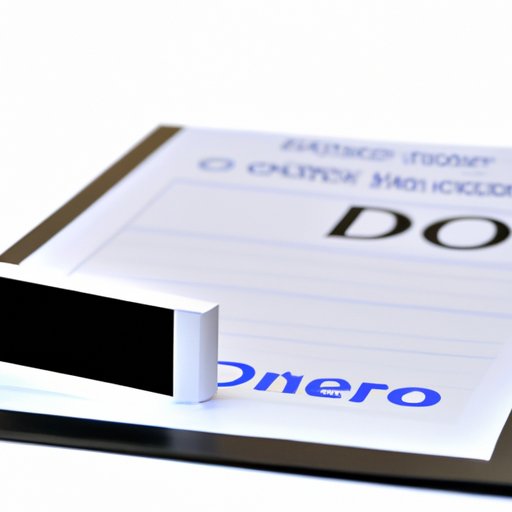
How Much is a Money Order?
When it comes to sending money, there are many options available nowadays. However, not everyone has access to traditional bank accounts or reliable online payment services. In these cases, a money order may be a useful alternative. They are widely accepted and can be purchased at various locations, including post offices, banks, and retail stores. But how much is a money order really, and what fees should you expect? Before you buy a money order, it’s essential to understand the associated costs to avoid any surprises and make an informed decision.
The Cost of Money Orders: What You Need to Know
The cost of a money order generally varies depending on several factors, such as the issuer, the amount sent, and the destination country. Some issuers charge a flat rate for their money orders, while others charge a percentage of the total amount sent. Additionally, the fees for international money orders tend to be higher than for domestic ones.
For example, the United States Postal Service (USPS) charges up to $1.25 for domestic money orders up to $500, and $1.75 for amounts up to $1000. International money orders cost $4.50. Most banks charge similar fees. Retail stores, such as Walmart or 7-Eleven, may offer lower fees but often have a cap on the maximum amount you can send.
How Much Does a Money Order Really Cost?
The fees included in a money order typically consist of the following:
- Issuance fee: This is the fee charged upfront by the issuer when you purchase a money order. It may range from a few cents to several dollars.
- Processing fee: Some issuers may charge an additional fee for processing the money order.
- Currency conversion fee: If you are sending money to another country, a currency conversion fee may apply.
It’s worth noting that there are additional hidden fees or costs that may apply, such as if you request a copy of the money order, need to cancel or replace the money order, or fail to cash it within a certain timeframe. These fees can add up, so it’s important to read the fine print carefully and ask questions if anything is unclear.
To give you an idea of the total cost of a money order, let’s take an example. If you purchased a $200 domestic money order at USPS, you would pay an issuance fee of $1.25 plus the cost of the money order itself. Assuming there are no additional fees, the total cost would be $201.25.
Understanding the Fees Associated with Money Orders
As mentioned earlier, there are several types of fees that may be charged when buying a money order. It’s also important to note that some issuers may have different policies regarding these fees.
For instance, some banks may waive the issuance fee if you have an account with them or if you are a senior citizen. Retail stores may offer discounts if you purchase multiple money orders at once. On the other hand, some issuers may charge higher fees for urgent or same-day money orders.
To avoid unnecessary fees whenever possible, consider shopping around for the best deal. You can also use online calculators to compare the cost of different money orders from various issuers.
The Pros and Cons of Using Money Orders: A Cost Analysis
While money orders can be a convenient way to send or receive money, they are not always the best option for everyone. Here are some of the pros and cons of using money orders:
Benefits of using money orders:
- Security: Money orders are a safe and secure method of payment as they are difficult to counterfeit and can be tracked.
- Speed: Unlike traditional checks, money orders do not require a processing time, making them a quicker option for urgent payments.
- Ease of use: Money orders are widely available, and you do not need a bank account to purchase one.
Drawbacks of using money orders:
- Cost: Money orders can be more expensive than other payment methods, especially for larger amounts.
- Limited availability: Not all issuers offer money orders, and some may have restrictions on the maximum amount you can send.
When deciding whether to use a money order, it’s essential to consider your specific needs, as well as the costs involved. For instance, if you are sending a small amount of money and need it to arrive quickly, a money order might be the best option. However, if you’re sending a large sum, you may want to explore other options, such as wire transfers, which tend to have lower fees for higher amounts.
What to Consider Before Purchasing a Money Order
Before buying a money order, here are some factors to keep in mind:
- Transaction limits: Some issuers may have minimum or maximum transaction limits that you need to be aware of.
- Risks and limitations: Money orders can be lost or stolen, and if you are not careful, you may fall victim to fraudulent schemes.
- Best deals: Compare the fees charged by different issuers and look for any discounts or promotions that may apply to your situation.
By doing your research beforehand, you can avoid any issues or unexpected costs later on.
Money Order Fees: Are They Worth It?
When it comes down to it, the choice of whether to use a money order ultimately depends on your specific needs and circumstances. While money orders can be more expensive than other options, such as checks or online payments, they offer added security and convenience, which may be worth the extra fees in some situations.
As with any financial transaction, it’s essential to read the terms and conditions carefully, understand the fees involved, and seek out the best deal whenever possible. By doing so, you can make informed decisions and avoid any unpleasant surprises.





